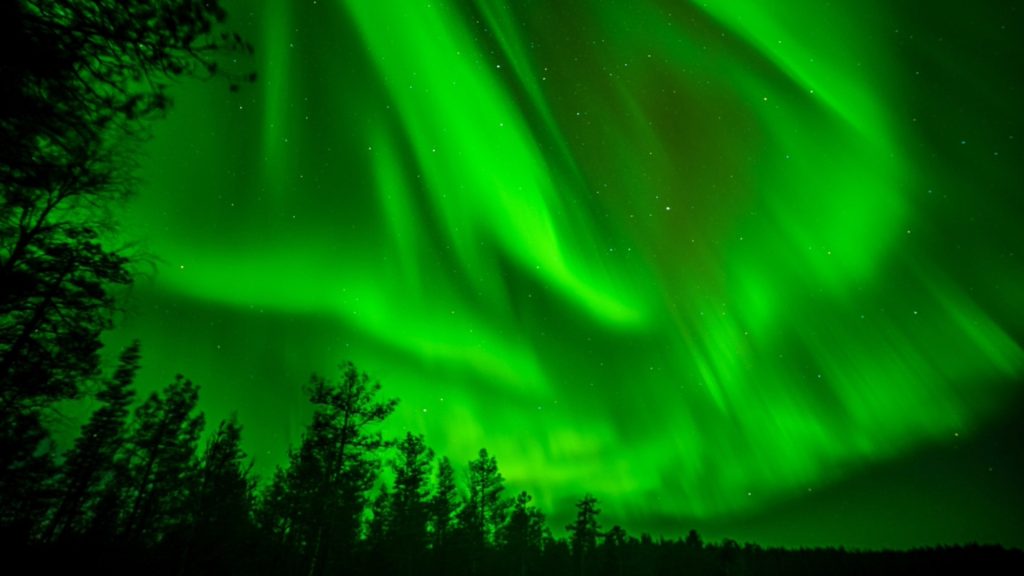For thousands of years, humans have watched the vibrant aurora borealis dance across the night sky, but these beautiful phenomena are more than just a pretty sight – they’re also a warning sign of a hidden danger: geomagnetically induced currents.
The aurora is caused by particles from the sun colliding with the Earth’s magnetic field, and these same forces can also compress the magnetic field, creating huge electrical currents that reach the ground.
New research shows that the angle at which these solar shocks hit Earth is crucial for protecting infrastructure.
“Auroras and geomagnetically induced currents are caused by similar space weather factors. The auroras are a visual warning that currents in space can generate geomagnetically induced currents on the ground,” explained Denny Oliveira of NASA’s Goddard Space Flight Center, lead author of the new study.
Frontal impact
Earth’s dazzling auroras result from two processes: solar storms caused by the Sun, and magnetic field compression caused by interplanetary shocks. These shocks occur when the fast solar wind overtakes the slower currents, creating shock waves.
Both can send dangerous electrical currents through the earth and damage electrical infrastructure. Large events pose a greater threat, but even small shocks pose a risk.
“The auroral field can expand significantly during intense geomagnetic storms,” Oliveira added. “Usually, its southern boundary is around 70 degrees latitude, but in extreme cases it can go down to 40 degrees or even more. This certainly happened during the May 2024 storm, the most intense in the last 20 years.”
The researchers found that a head-on impact would produce the most powerful geomagnetically induced currents, which could result in “powerful ground currents that could threaten pipelines and undersea cables.”
This is because a frontal impact can cause the magnetic field to become more compressed.
How to Find the Angle
The researchers investigated how the angle and timing of solar shocks affect geomagnetically induced currents. To understand the connection, the researchers looked at two data sets.
One is a collection of records of interplanetary shock waves, and the other is electrical current measurements from a natural gas pipeline in Mantsala, Finland. Aurora A period of high solar activity.
The researchers used data on the interplanetary magnetic field and the solar wind to calculate the angle and speed of each shock wave, then classified them into three categories: highly inclined, moderately inclined, and nearly head-on.
The study found a clear relationship between the angle of the shock and the strength of the current: the more head-on the shock from the sun, the stronger the jolt of electricity that reaches the ground. This surge of electricity usually occurs twice: immediately after the initial shock, and again during the smaller substorm that follows. Geomagnetic field Surprisingly, these peak surges were strongest at midnight, when Mantsara’s north pole faced directly towards the sun.
The study authors say scientists can predict the angle of an earthquake up to two hours before it strikes, which could give people time to take preventative measures such as reducing power to certain lines.
“The situation in Mantzara is critical, but we do not know the global situation. Furthermore, the data from Mantzara was missing several days during the study period, which forced us to exclude many events from the shocks database. It would be great if utilities around the world could make their data available to scientists so that it could be used for research,” Oliveira concluded. press release.
The findings were published in the journal. The cutting edge of astronomy and space science.
About the Editor
Mrigakshi Dixit Mrigakshi is a science journalist who enjoys writing about space exploration, biology and technological innovations. She has professional experience in both broadcast and digital media and is trained in various storytelling formats. Her work has been featured in renowned publications like Nature India, Supercluster, Astronomy magazine etc. If you have an idea, feel free to email us.


